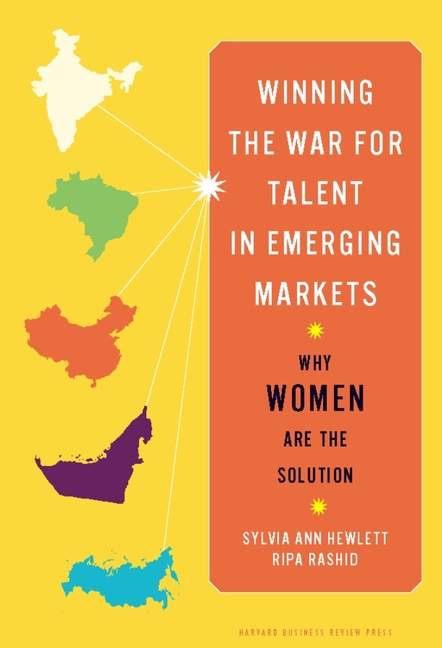Jack Covert Selects - Winning the War for Talent in Emerging Markets
August 11, 2011
Winning the War for Talent in Emerging Markets: Why Women Are the Solution by Sylvia Ann Hewlett and Ripa Rashid, Harvard Business School Press, 288 pages, $35. 00, Hardcover, August 2011, ISBN 9781422160602 We were big fans of Sylvia Ann Hewlett’s 2007 book, Off-Ramps and On-Ramps: Keeping Talented Women on the Road to Success. Hewlett is a prominent gender and workplace issues expert and, in that book, she took a much-needed look into a critical problem in our business world: the current career model and its lack of flexibility for talented women.
Winning the War for Talent in Emerging Markets: Why Women Are the Solution by Sylvia Ann Hewlett and Ripa Rashid, Harvard Business School Press, 288 pages, $35.00, Hardcover, August 2011, ISBN 9781422160602
We were big fans of Sylvia Ann Hewlett's 2007 book, Off-Ramps and On-Ramps: Keeping Talented Women on the Road to Success. Hewlett is a prominent gender and workplace issues expert and, in that book, she took a much-needed look into a critical problem in our business world: the current career model and its lack of flexibility for talented women. In her new book, Winning the War for Talent in Emerging Markets, written with Ripa Rashid, she turns her attention to the hiring and retention problems inherent with emerging markets and the multinational corporations they spawn, and how women can be the solution to those problems.
The situation and challenges for working women in each of these countries varies greatly. In the first half of Winning the War on Talent, the authors analyze the economic, societal, and hegemonic trends in each country, then present sub-sections including "A Complex Web of Pulls" that enumerates the particular challenges of women in each culture, and "Push Factors at Work" that illustrates the demands of work in that particular country, including expected hours, commute times and challenges. In Brazil, women must balance the expectations that come from a machismo culture that still judges a woman's value by her contribution in the home and by her attention to her appearance. Russia is quite the opposite. Its Socialist history established an expectation that women always work and girls were educated and trained alongside boys. As a result, it is perhaps more difficult for Russian women to create a healthy home life (due to high divorce rates and high cost of living) than a productive work life, though they are still expected to respond to extremely long work hours and an inadequate transportation infrastructure. China is yet another wholly different situation with elite education highly regarded, and work highly encouraged, but the demands of contributing to the livelihood of aging parents as well as parenting high achievers is a nearly untenable situation. In the UAE, despite an increase in women working outside the home, there is still "a formidable range of social and cultural prohibitions" that deters most women. (When your culture discourages you from speaking to male strangers, and requires someone to accompany you, it makes traveling to an offsite meeting rather difficult.)
The second half of the book looks at eight "talent magnet" organizations whose policies attract and retain highly qualified and ambitious women throughout these emerging markets: Bloomberg, Ernst & Young, Goldman Sachs, Google India, HSBC, Infosys, PepsiCo India, and Siemens. These companies have done the three things the authors suggest in their Action Agenda:
- becoming a talent magnet, i.e., establishing a reputation for being a standout employer of talented women ... by tapping into unconventional talent pools or targeting disciplines where they are underrepresented
- claiming and sustaining ambition among talented women ... by making women feel valued and providing them with targeted skills and opportunities they need to succeed
- dealing with pulls and pushes, keeping in mind the priorities for women in the emerging markets context



